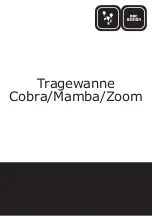
Section 5: Programming
DLS Programming
Downloading allows programming of the entire alarm system via a computer. All functions and features, changes and status,
such as trouble conditions and open zones, can be viewed or programmed by downloading.
The following downloading options are available:
l
6-hour window on start up: When the alarm system is powered up, downloading access is available for 6 hours. This
provides the option of downloading without having to complete any keypad programming.
l
Double call method: The installer initiates a downloading window by calling the alarm system, hanging up, then call-
ing back again.
l
User enabled DLS window: The user initiates a downloading window using [*][6][Master code][05]. This can be a 6-
hour window where the installer initiates and terminates downloading as many times as necessary, or it can be a 1-
hour, 1 use window.
l
User initiated call-up: the user can initiate a downloading session using [*][6][Master Code][06].
l
On-site downloading using USB: The installer connects a computer directly to the alarm system to perform on-site
downloading.
l
Auto event buffer upload: The Event buffer is automatically uploaded to the DLS/SA computer when it reaches 75%
full.
Refer to the DLS/SA programming sections described below for configuration options.
[401] DLS/SA Options
1 – Double Call
ON: Calls for downloading or SA are answered if a successful double call routine is detected. Have the downloading com-
puter call the system and let the telephone line ring once or twice. After 1 or 2 rings, hang up. If called back within the dur-
ation of the double call timer (section [405]), the alarm system answers on the first ring.
OFF : Incoming calls are not answered using the double call routine unless the user enables the DLS window.
Note:
This feature controls the DLS window for PSTN connections only.
2 – User Enables/Disables DLS
ON : The [*][6][Master Code][05] command enables a 6-hour window where, on power-up, downloading calls are answered
if a successful double call routine is detected.
OFF: The user cannot enable a downloading window.
3 – DLS CallBack
ON : When a downloading call is answered, both the computer and the alarm system hang up. The alarm system then calls
the downloading computer back using the [402] downloading telephone number and begins the DLS session.
Note:
Disable this option if using more than one downloading computer.
OFF : After successful validation, the downloading computer gains immediate access to the alarm system.
4 – User Call-Up
ON : A single call attempt can be made to the downloading computer using [*][6][Master Code][06].
OFF: [*][6][Master Code][06] does not allow initiation of a downloading session.
6 – Panel Call-Up and Baud Rate
ON : When a DLS/SA session is initiated by the user, the initial header is sent at 300 baud.
OFF: When a DLS/SA session is initiated by the user, the initial header is sent at 110 baud. The alarm system will then
switch to 300 baud in order to receive the response from the DLS computer.
7 – Alternate Communicator DLS
ON: When this feature is enabled, the alarm system responds to DLS requests through the alternate communicator IP or cel-
lular paths at any time, regardless of whether the DLS window is active or not.
However, if a pre-defined number of consecutive incorrect DLS access codes is detected (See "Remote Lockout DLS" on
page 101) while trying to establish a connection, alternate communicator DLS access is locked out until the next hour roll-
over.
OFF: When this feature is disabled, the alarm system only responds to DLS requests through the alternate communicator IP
or cellular paths when the DLS window is active.
The DLS/SA window is active following a power up or if enabled using [*][6][maser code][05] (System Service/DLS).
- 129 -
















































